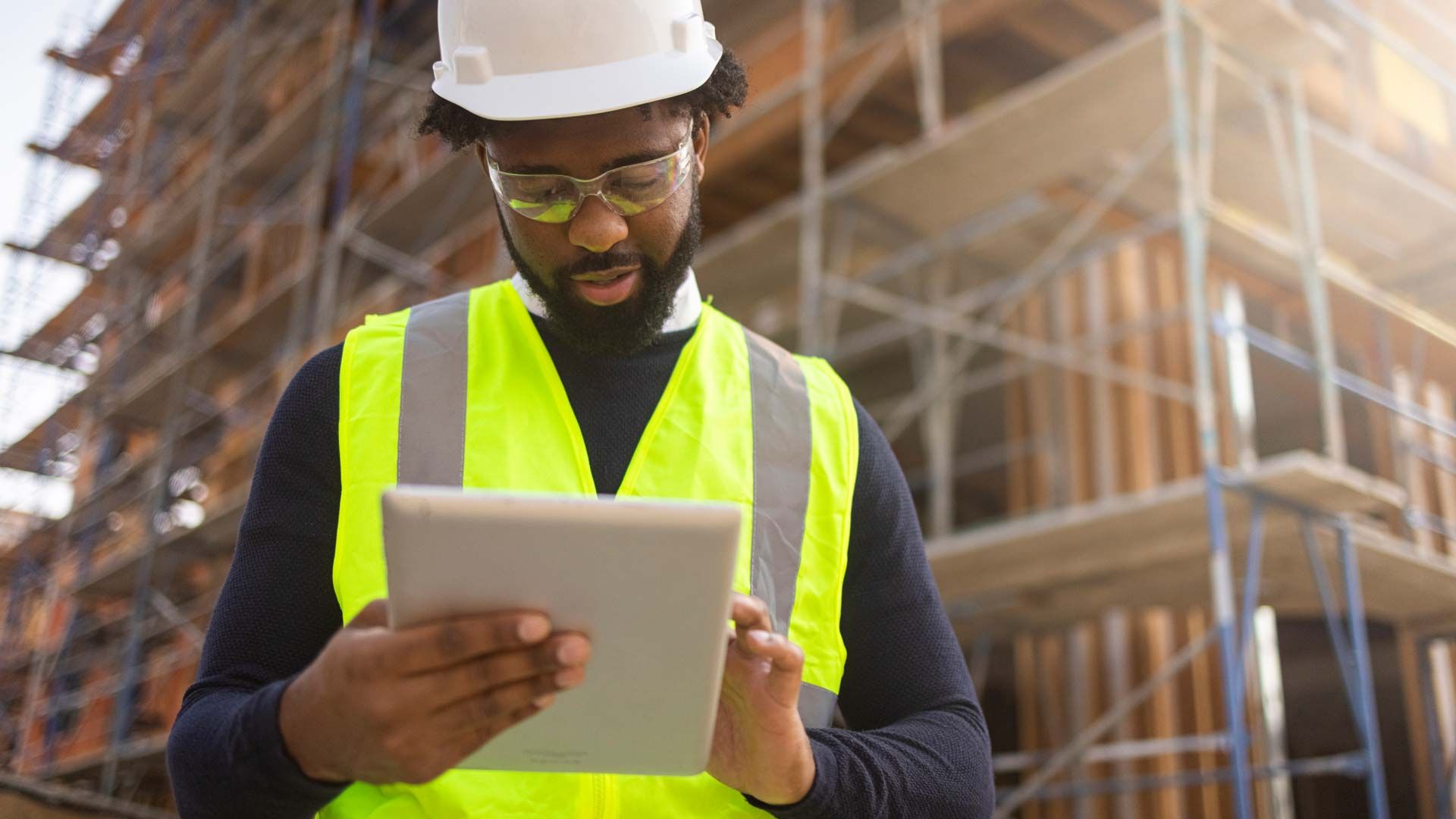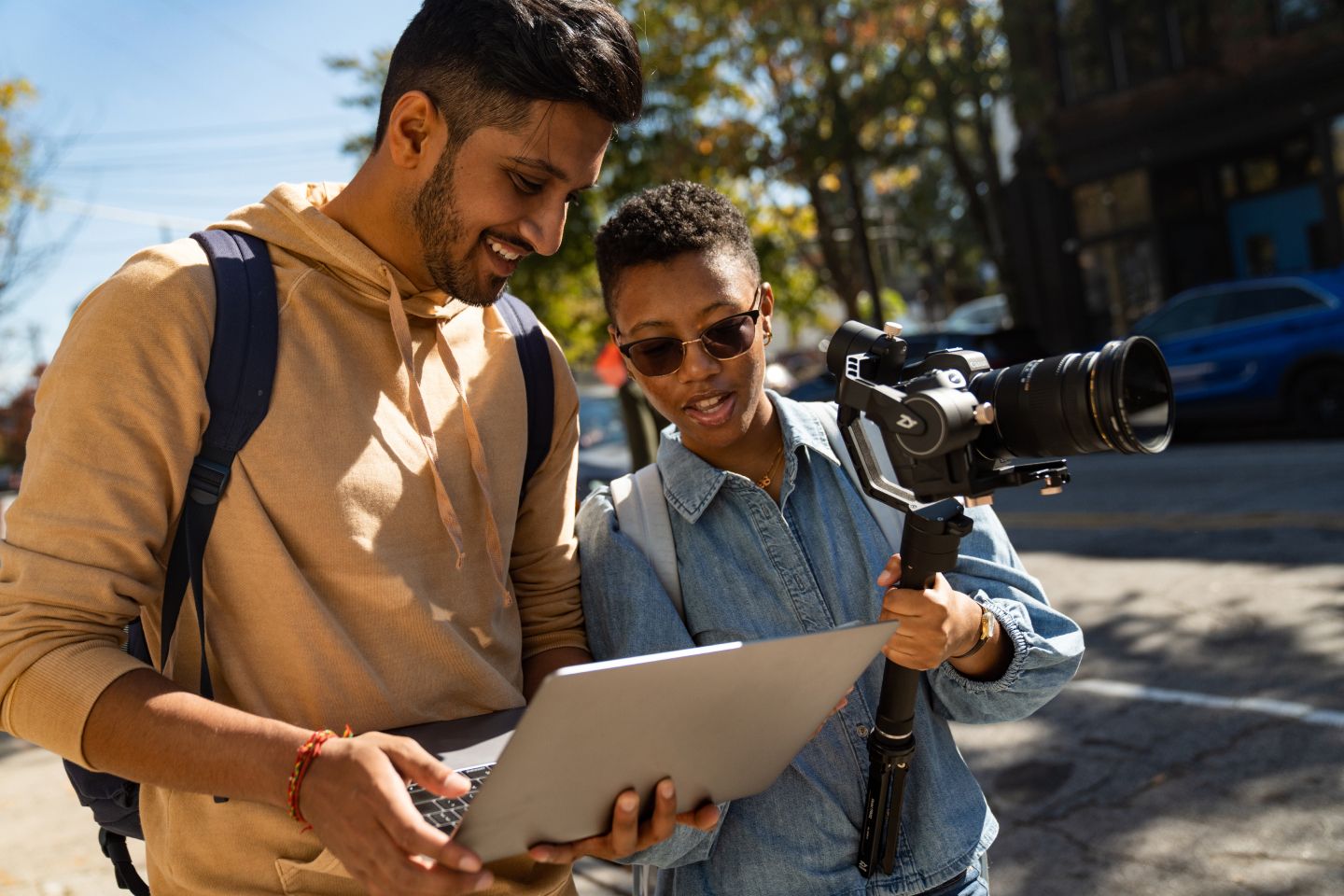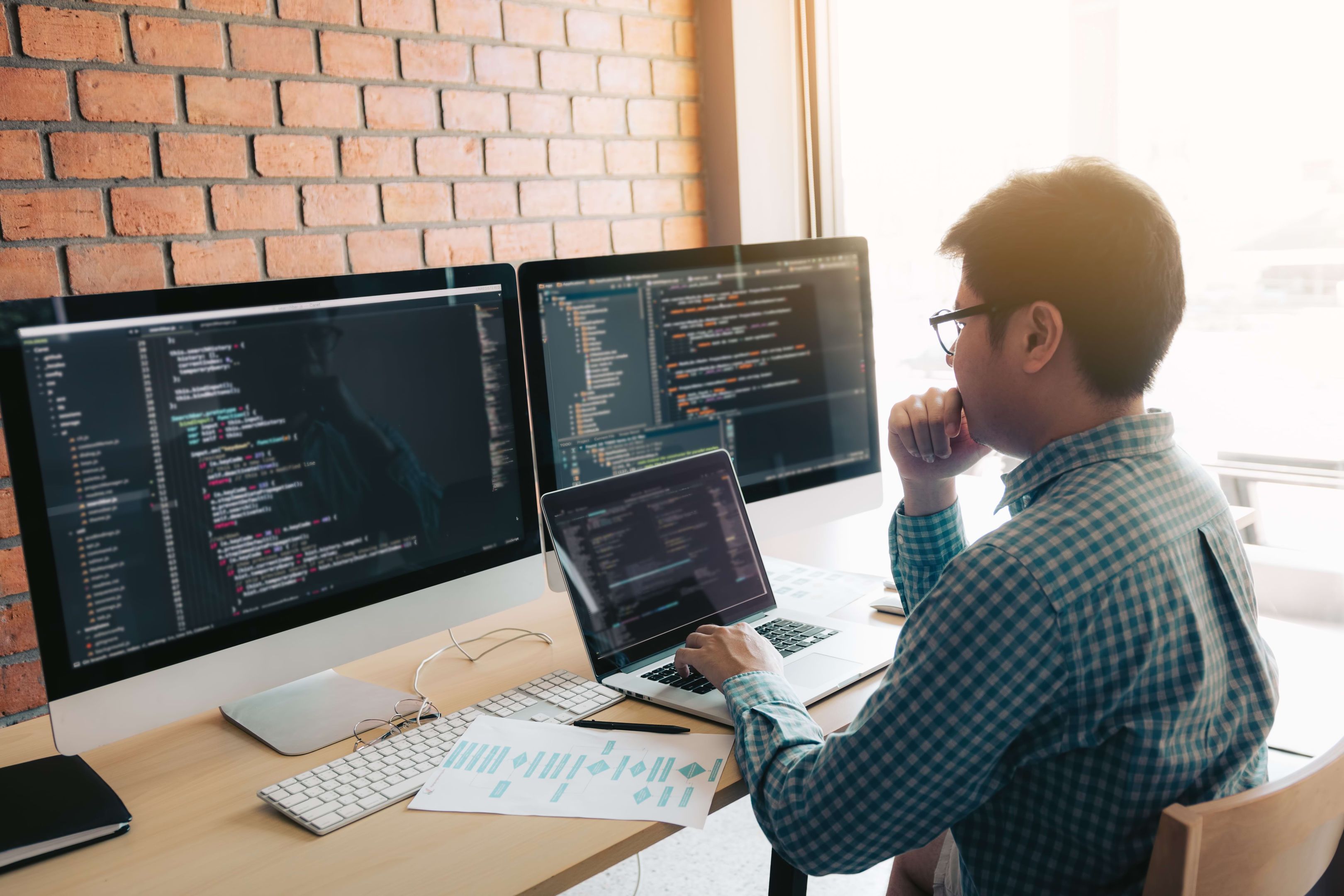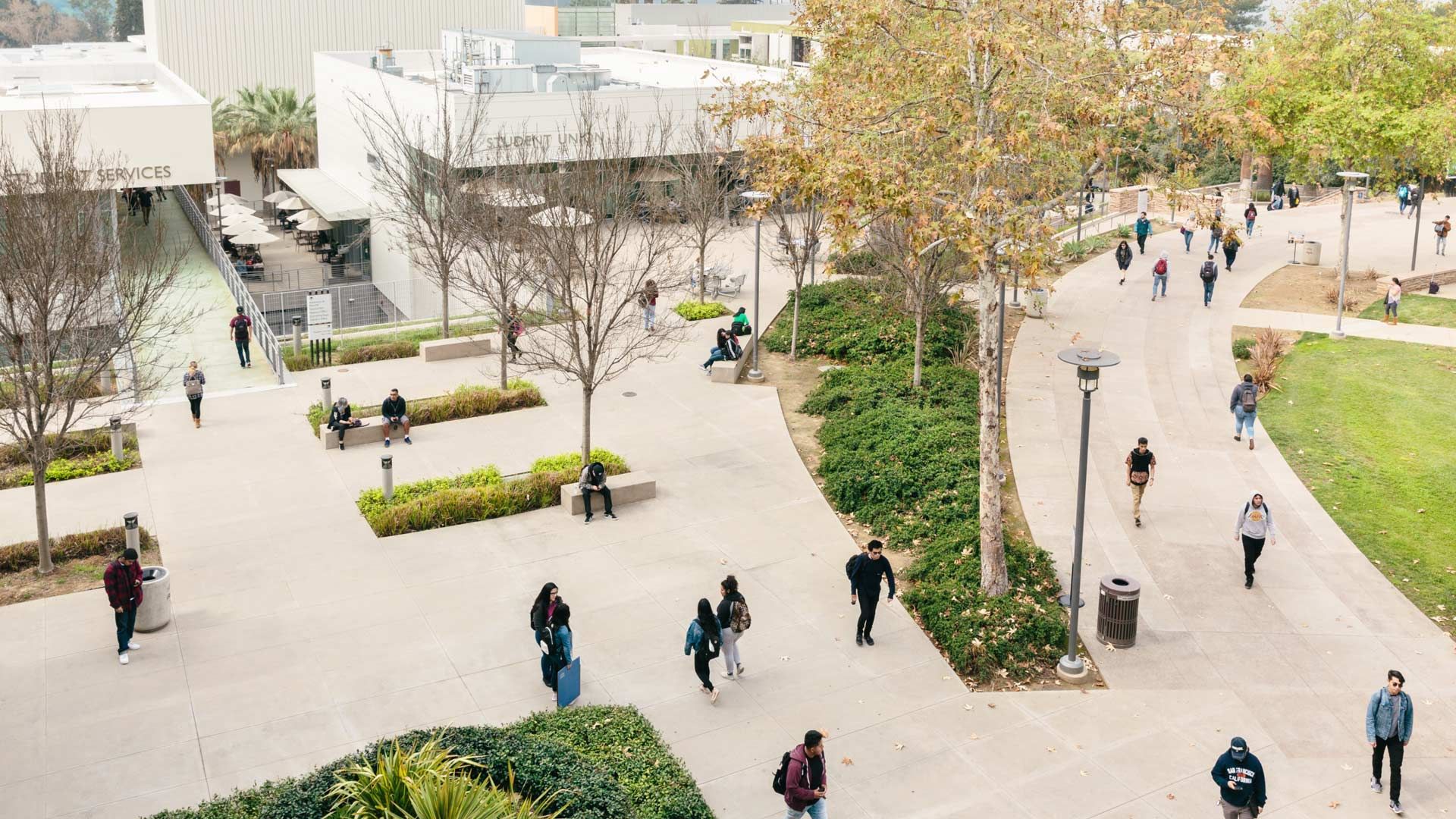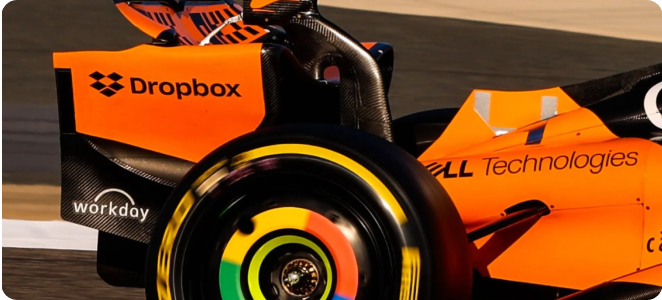Dash: Find what you need, protect what matters most
AI universal search meets complete content control, from one central platform.
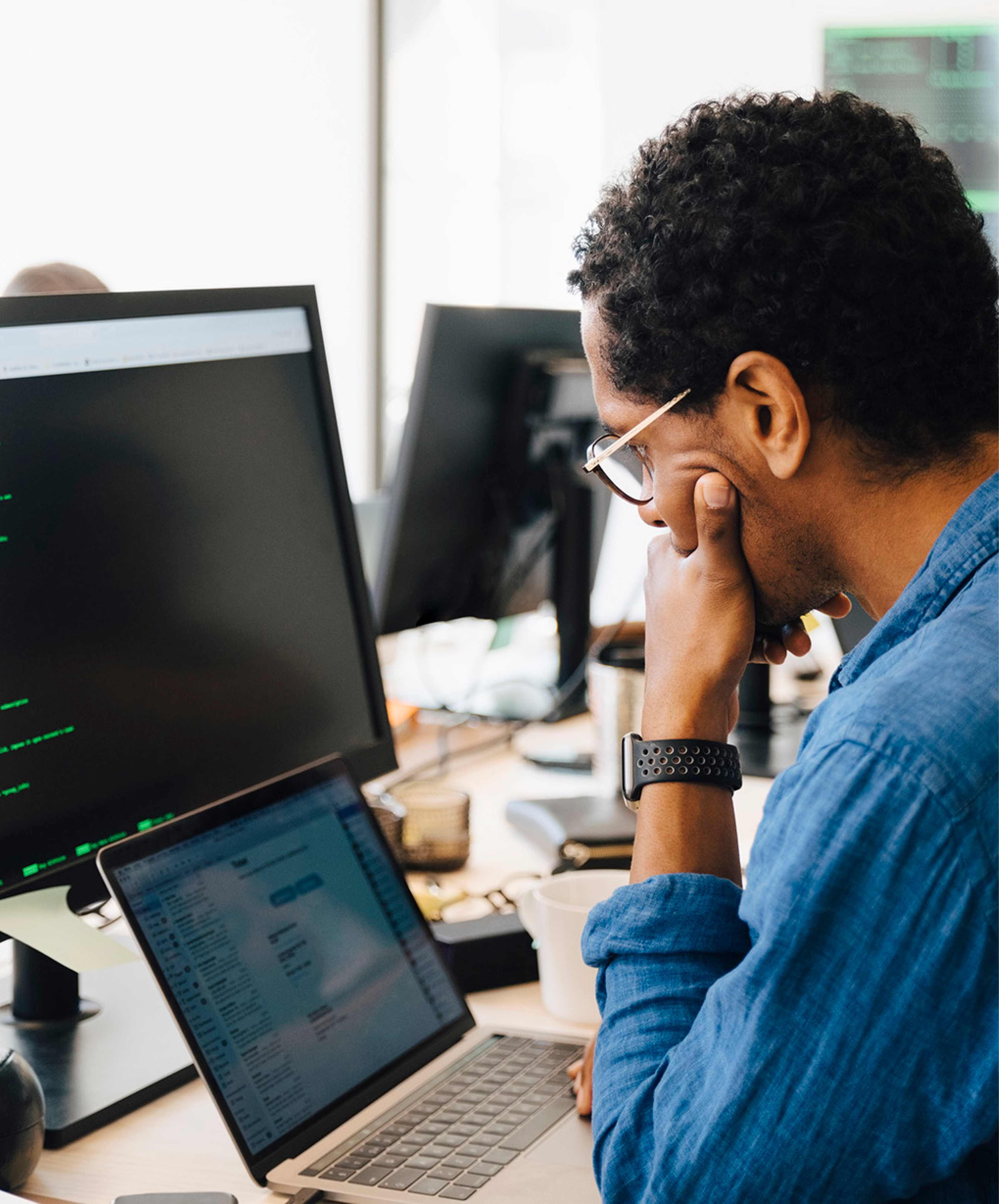
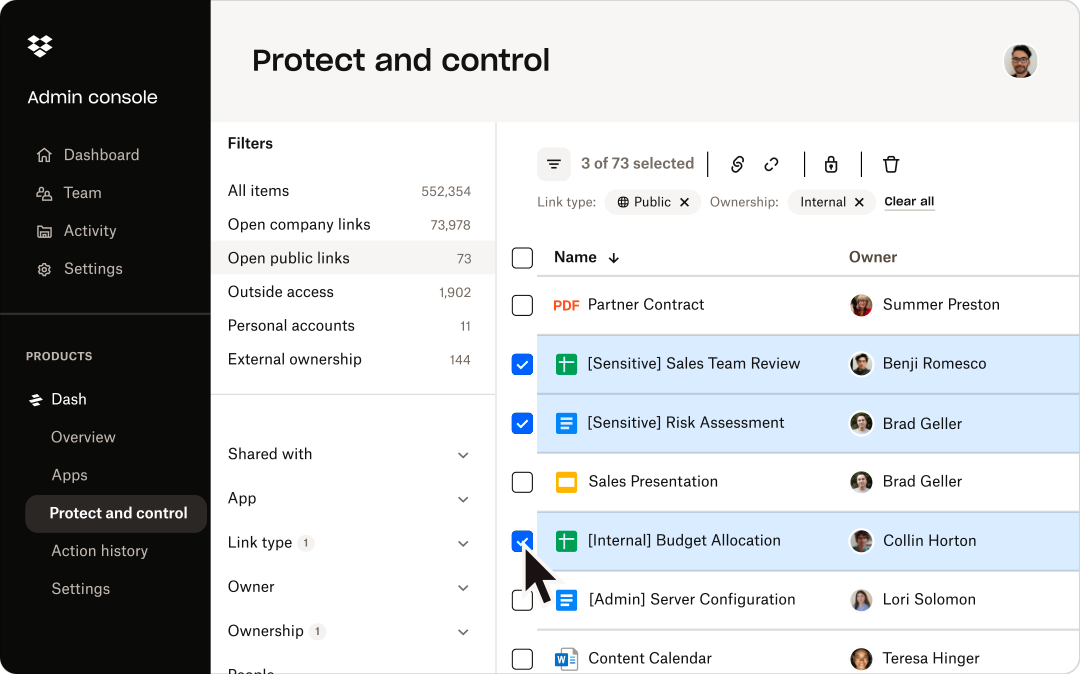
Instant, actionable insights
With Dropbox DocSend, page-by-page analytics and permission controls track file use in real-time, so you can see when clients, contractors, or collaborators have viewed your content.

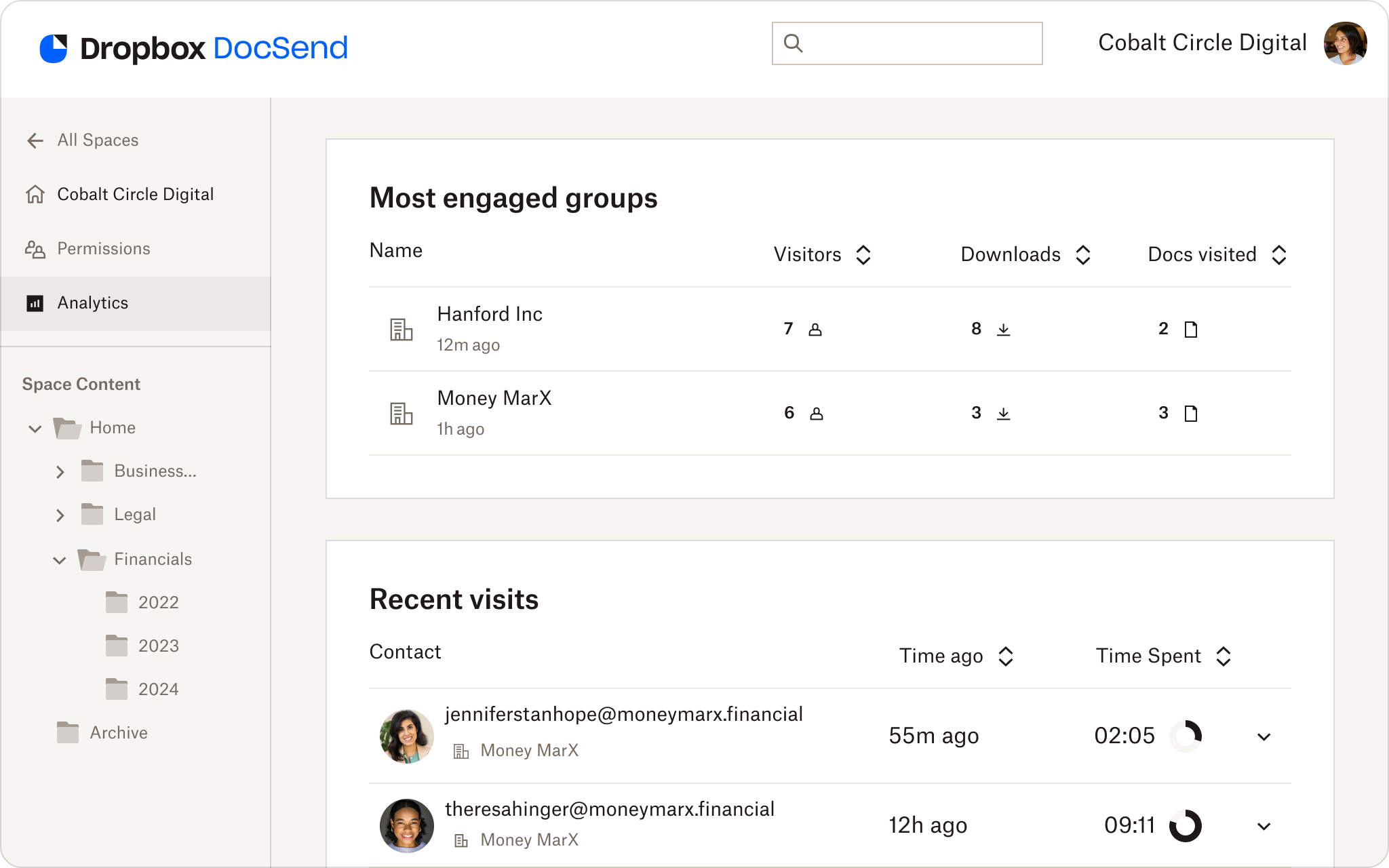
Reduce the chaos
Dropbox Replay reduces feedback back-and-forth. Collect video, image, and audio feedback all in one place, so you can get to final delivery in no time.


Security never comes second
From industry-leading encryption and tamper-proof documents to version history and recovery, Dropbox keeps your intellectual property safe and never sells or shares your data.




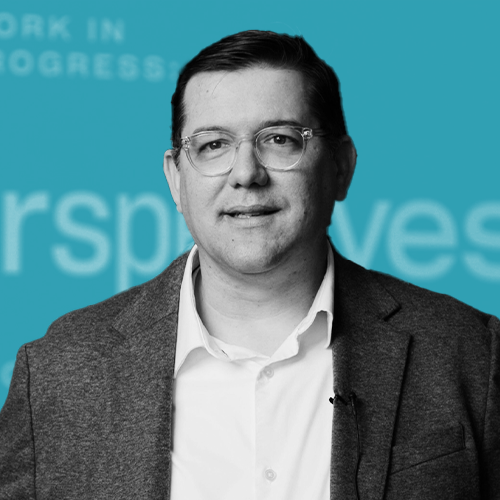
“The security of knowing our information is safe.”
Customer Bryan Chandler reveals how his team uses Dropbox to organize and share files securely.
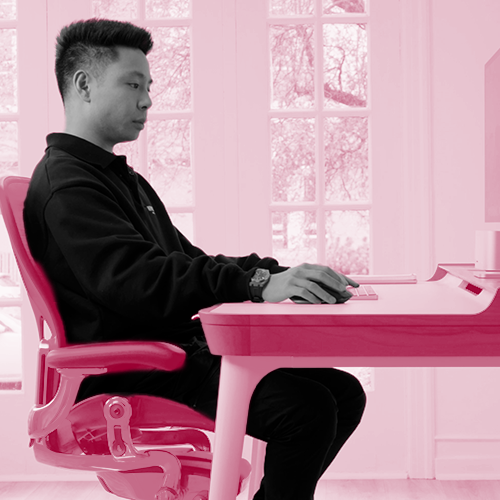
“Seriously impressive security features”
Tech influencer Justin Tse discusses why he trusts Dropbox to keep his content safe.
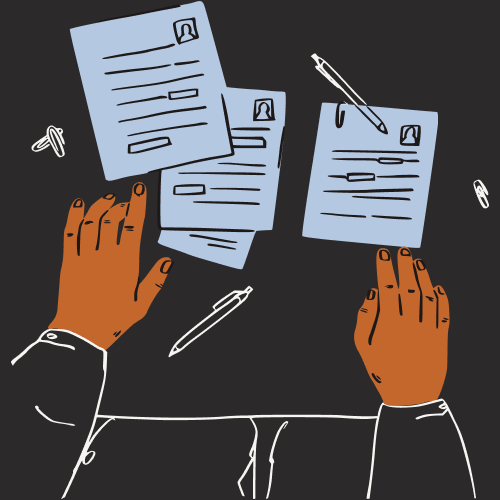
“How do you enhance security and keep productivity reasonable?”
Your company’s sharing content with collaborators all over the world. Are you in control?

